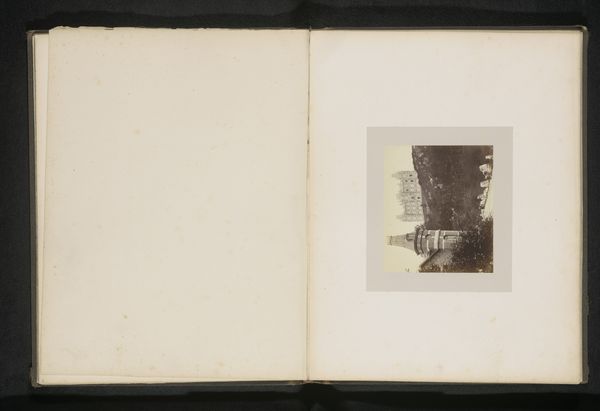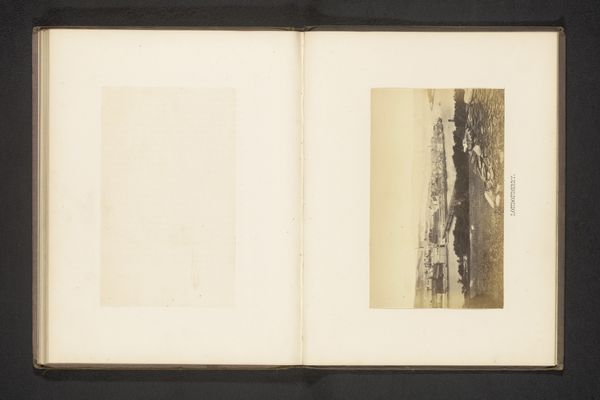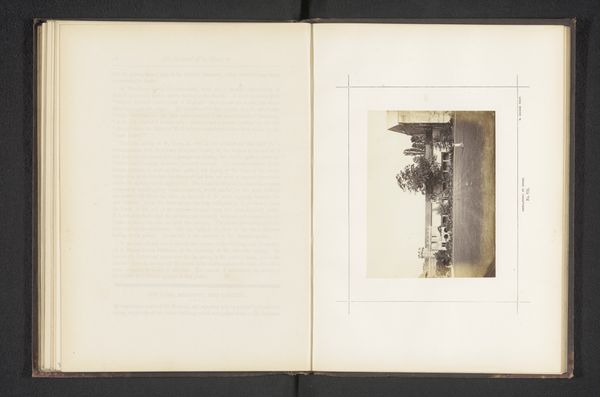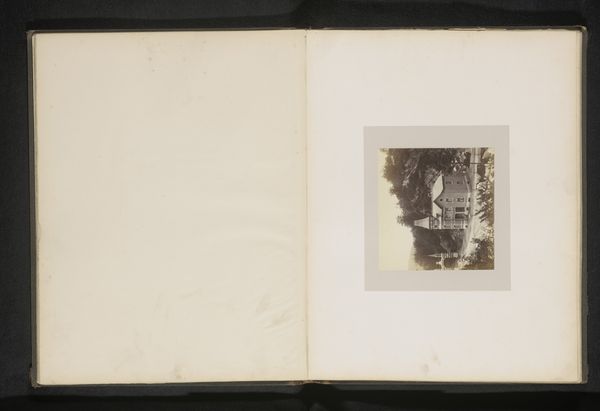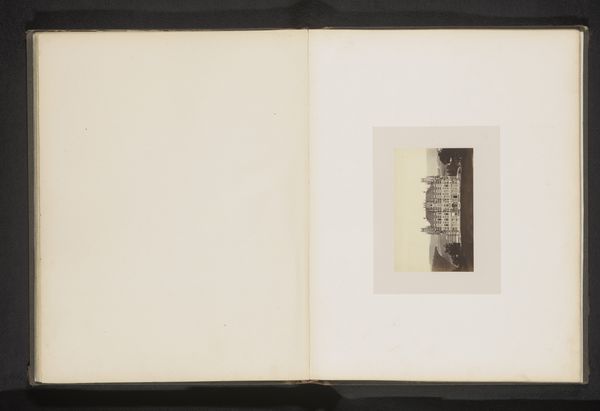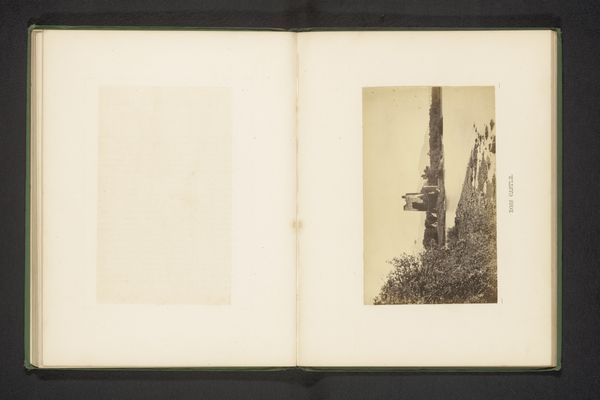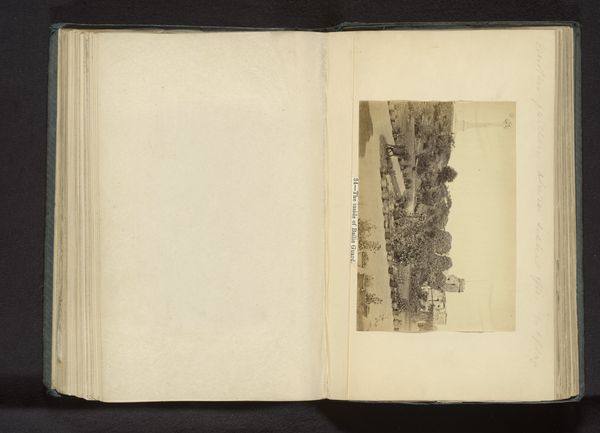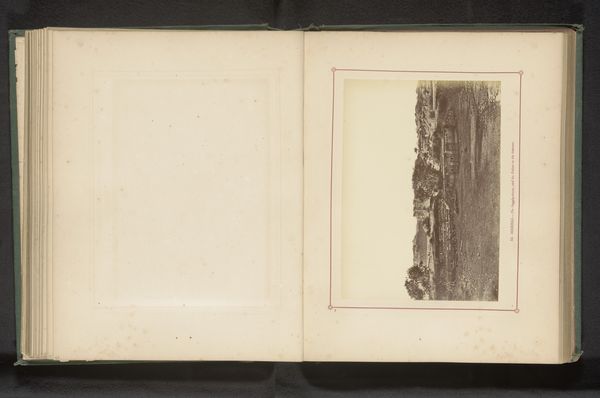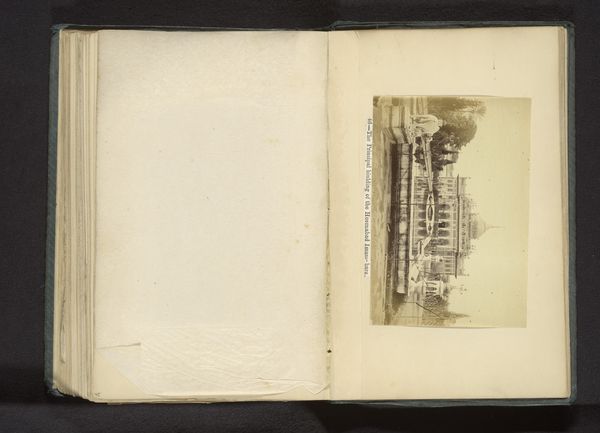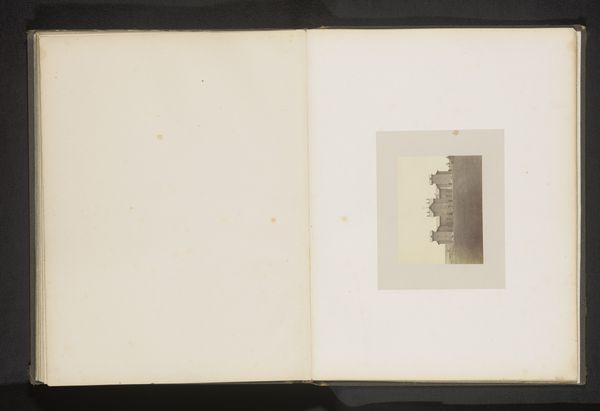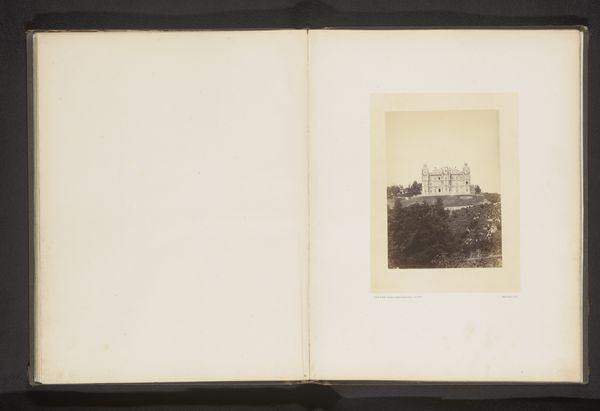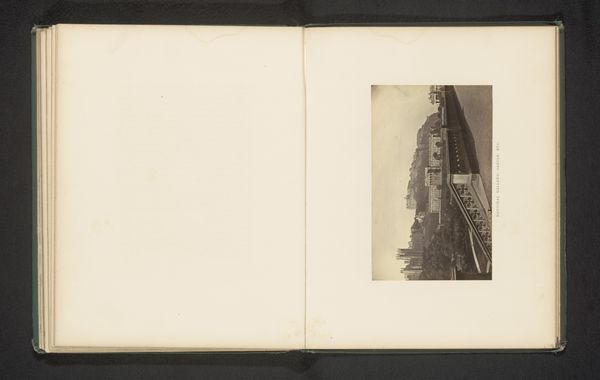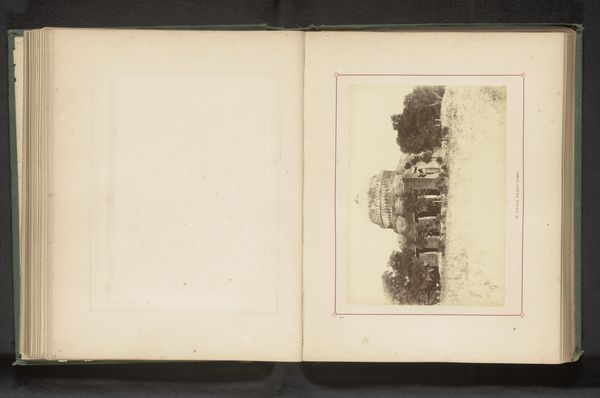
photography, albumen-print
#
landscape
#
photography
#
albumen-print
#
realism
Dimensions: height 115 mm, width 132 mm
Copyright: Rijks Museum: Open Domain
Curator: Here, within the Rijksmuseum's collection, we have a captivating albumen print titled "Gezicht op Château de Marlagne te Wépion." The photograph, created by Ghémar Frères before 1867, showcases the Château de Marlagne in a style that merges realism with the burgeoning landscape photography of the era. Editor: My initial impression is one of faded grandeur. The sepia tones lend it an almost dreamlike quality, like peering into a memory. There's a stark contrast, though, with how diminutive the château feels positioned within the album page itself. Curator: It's true, the framing device is significant. Albumen prints such as this one, popular during the mid-19th century, involved coating paper with egg white and then using it to capture the photographic image. The albumen creates a smooth surface and contributes to the print's tonal range and sharpness, but we must remember its humble beginnings in a darkroom setting to elevate this 'high art'. Consider also the social aspect: viewing these images was an activity exclusive to those with the resources to acquire them, often wealthy merchants and gentry. Editor: The choice of albumen is crucial, you're right. It contributes to the photograph's symbolic resonance, acting as a time capsule of bourgeois life and leisure. The château itself, what little we can discern through the veiling effect of time, is reminiscent of French Romantic architecture - hinting at an era of nobility, leisure, and elaborate displays of status. Its presence evokes the landed gentry, privilege, and permanence, all conveyed through its architectural features. The surrounding foliage acts as a screen, adding an element of seclusion and exclusivity. Curator: Indeed. The choice of realism, however, grounds these romantic allusions in tangible social conditions. Although the artist has highlighted its magnificence, it has captured the existing surrounding without idealizing the subject as previous paintings of these estates often did. This realism allowed its bourgeois owners to show off their land with greater accuracy, not just grand designs and romantic imagery that painters had been producing for centuries. Editor: It’s a compelling push and pull, isn’t it? We are drawn into this representation through a photographic eye trained to highlight visual clues and signifiers that remind us of tradition, permanence and power, all captured in a medium with complex physical attributes requiring both craftsmanship and privilege. Curator: A fitting culmination, considering how photography was already redefining not just art but historical records during this period. Thank you. Editor: Likewise, this was certainly an enlightening exercise!
Comments
No comments
Be the first to comment and join the conversation on the ultimate creative platform.
